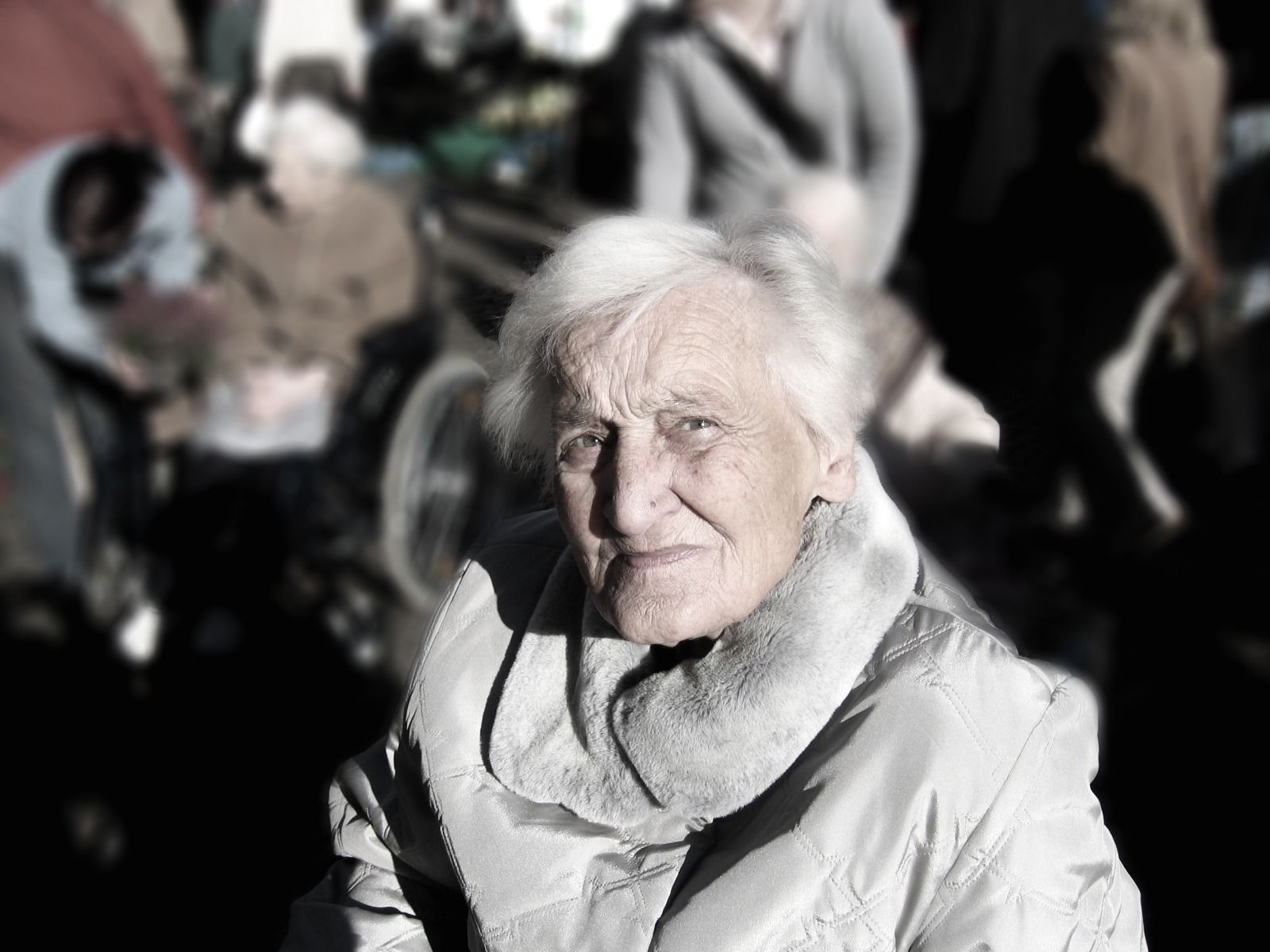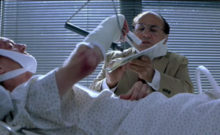As a society, we often fail to treat the elderly and vulnerable among us with dignity and care, and these groups too often gravitate to the margins of our communities. This is not a new problem.
Indeed, a long, dark history haunts our past (and sometimes, present) policies with regard to of patients of mental illness. Asylums have not historically been places of treatment and healing but of incarceration—or worse. Dr. Allison M. Foerchner writes,
When [asylum] staff did attempt to cure the patients, they followed the practices typical of the time period—purging and bloodletting, the most common. Other treatments included dousing the patient in either hot or ice-cold water to shock their minds back into a normal state. The belief that patients needed to choose rationality over insanity led to techniques aiming to intimidate. Blistering, physical restraints, threats, and straitjackets were employed to achieve this end. Powerful drugs were also administered, for example, to a hysterical patient in order to exhaust them. Around the mid-1700s, the Dutch Dr. Boerhaave invented the “gyrating chair” that became a popular tool in Europe and the United States. This instrument was intended to shake up the blood and tissues of the body to restore equilibrium, but instead resulted in rendering the patient unconscious without any recorded successes.
Some asylums, such as the infamous Bedlam in London, had the habit of displaying patients in a sickening show for the amusement of the general public.
Somewhat comparable crimes have also been perpetrated against the elderly. Mistreatment of senior citizens has been an important political issue for at least the past seven decades. Dramatic increases in life expectancy during the twentieth century produced a dramatic increase in the elderly population. In 1900, 6.4% of the U.S. population was aged 60 or older. That percentage had nearly doubled to 12.2% by 1950. Today, approximately 20% of the population is at least 60 years old, and that number is projected to increase for at least the next several decades.
The nation found itself initially ill-equipped to care for its elders. Federal entitlement programs such as social security and Medicaid arose at least as a partial means to address the problem. The Older Americans Act was signed into law in 1965, establishing the Administration on Aging within the Department of Health.
Elder abuse, or more offensively stated, “granny battering,” became a prominent political issue in the 1970s. By the late 1980s, each state had implemented some form of legislation related to the mistreatment of older people. Several studies conducted in the 1980s and 1990s showed that senior citizens were at an increased risk to experience physical abuse, financial exploitation, and neglect. An Elder Abuse Task Force formed in 1990 which has since evolved into the National Center on Elder Abuse. Most local or state governments now offer adult protective services aimed at supporting older or disabled adults who have been abused, exploited, or neglected.
Despite these efforts, elder abuse remains a serious problem. Its incidence is difficult to measure because victims rarely report their abusers. We do know senior citizens are at an increased risk to fall victim to financial exploitation such as online and telephone scams and the exercise of undue influence over the victim’s financial affairs. Other rather shocking statistics suggest high rates of elder abuse and neglect in nursing homes. The mentally ill and disabled are at an increased risk to experience physical and sexual violence.
One popular legislative solution involves punishing the mistreatment of the elderly and vulnerable through enhanced criminal penalties. Unfortunately, these cases prove notoriously difficult to prosecute as a result of the government’s consistent inability to secure sufficient evidence to establish each element of the crime beyond a reasonable doubt. This happens for several reasons. First, elderly and disabled victims are not typically good trial witnesses due to issues ranging from memory loss, difficulty focusing, poor verbal skills, physical fatigue, or dementia. Second, elderly and vulnerable victims rarely timely report abuse due to shame or because the abuse was perpetrated by a friend or family member. The extended time frame complicates the collection of evidence. Third, abusers frequently occupy a position of power over their senior citizen or mentally handicapped victims and are able to obstruct the collection and use of incriminating evidence.
Because plaintiffs in a civil trial bear a lower burden of proof than the State does in a criminal trial, some legislators began to view the civil prosecution of these cases as a favorable alternative. Unfortunately, many victims of elder abuse find themselves in difficult financial circumstances—sometimes as a result of their abuse—rendering it difficult to afford a private attorney. The scant resources of victims and the relatively small amounts of money at issue often fail to present a meaningful monetary incentive for civil attorneys to take up the cause.
Several states thus sought to incentivize the civil prosecution of elder abuse. In Nevada, legislation was introduced which would have awarded treble damages against an individual who abused or neglected an elderly or vulnerable person. This would better enable private attorneys to take elder abuse cases on a contingency fee basis. Further, the bill allowed for the recovery of attorney fees if proven by a preponderance of the evidence that the liable party acted with recklessness, oppression, fraud, or malice.
The proposed legislation was introduced in an effort to remedy the civil bar’s failure to take these cases; this idea permeates the legislative history. Deputy Attorney General Bonnie Brand spoke in favor of the bill at a Senate Committee on Judiciary hearing on February 12, 1997: “She concurred by allowing recovery of attorney’s fees the private bar would be encouraged to prosecute these cases when criminal prosecutors cannot.” In another hearing on April 15, 1997, Deputy Attorney General Pamela Roberts addressed the committee and stated “the purpose of the bill was to encourage private attorneys to take up the fight on behalf of elder victims.” While the bill did pass and was signed into law, it was amended to allow for double, rather than treble, damages. While treble damages would have obviously offered the civil bar a more impressive monetary incentive, the double damages and attorney fees provisions are still often effective at advancing that underlying goal.
Still, even with the prospect of double damages, these cases are not always the most financially attractive. Civil attorneys are business people and of necessity must keep in mind our bottom lines. However, we must also recognize many of us enjoy a privileged status in society and possess education, training, and resources many abuse victims lack. We bear an important duty to reach out to the elderly and vulnerable among us even when their cases might take the place of other more financially attractive ones. We are their last line of defense. After coming to us they may have nowhere else to turn.
Chris Beckstrom







